Jonathan Fieldsend
DIMBA: Discretely Masked Black-Box Attack in Single Object Tracking
Jul 17, 2022



Abstract:The adversarial attack can force a CNN-based model to produce an incorrect output by craftily manipulating human-imperceptible input. Exploring such perturbations can help us gain a deeper understanding of the vulnerability of neural networks, and provide robustness to deep learning against miscellaneous adversaries. Despite extensive studies focusing on the robustness of image, audio, and NLP, works on adversarial examples of visual object tracking -- especially in a black-box manner -- are quite lacking. In this paper, we propose a novel adversarial attack method to generate noises for single object tracking under black-box settings, where perturbations are merely added on initial frames of tracking sequences, which is difficult to be noticed from the perspective of a whole video clip. Specifically, we divide our algorithm into three components and exploit reinforcement learning for localizing important frame patches precisely while reducing unnecessary computational queries overhead. Compared to existing techniques, our method requires fewer queries on initialized frames of a video to manipulate competitive or even better attack performance. We test our algorithm in both long-term and short-term datasets, including OTB100, VOT2018, UAV123, and LaSOT. Extensive experiments demonstrate the effectiveness of our method on three mainstream types of trackers: discrimination, Siamese-based, and reinforcement learning-based trackers.
Efficient Approximation of Expected Hypervolume Improvement using Gauss-Hermite Quadrature
Jun 15, 2022
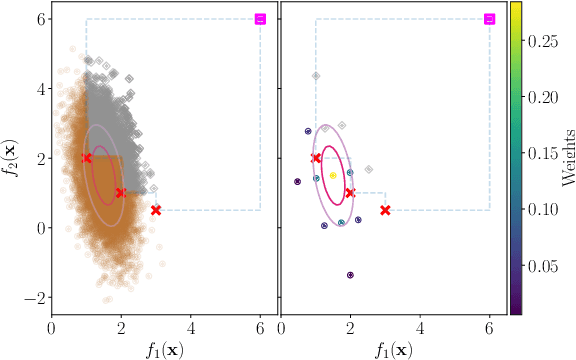
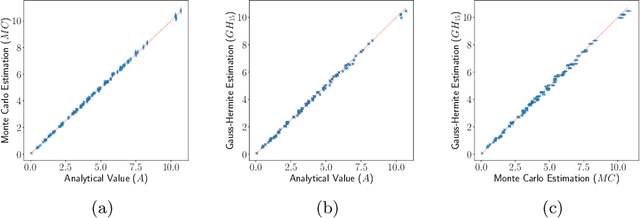
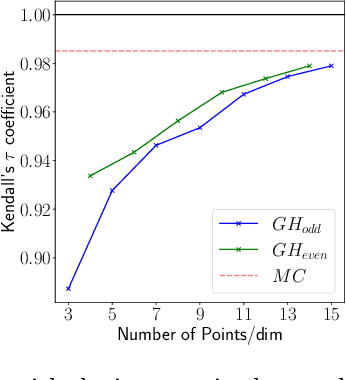
Abstract:Many methods for performing multi-objective optimisation of computationally expensive problems have been proposed recently. Typically, a probabilistic surrogate for each objective is constructed from an initial dataset. The surrogates can then be used to produce predictive densities in the objective space for any solution. Using the predictive densities, we can compute the expected hypervolume improvement (EHVI) due to a solution. Maximising the EHVI, we can locate the most promising solution that may be expensively evaluated next. There are closed-form expressions for computing the EHVI, integrating over the multivariate predictive densities. However, they require partitioning the objective space, which can be prohibitively expensive for more than three objectives. Furthermore, there are no closed-form expressions for a problem where the predictive densities are dependent, capturing the correlations between objectives. Monte Carlo approximation is used instead in such cases, which is not cheap. Hence, the need to develop new accurate but cheaper approximation methods remains. Here we investigate an alternative approach toward approximating the EHVI using Gauss-Hermite quadrature. We show that it can be an accurate alternative to Monte Carlo for both independent and correlated predictive densities with statistically significant rank correlations for a range of popular test problems.
How Bayesian Should Bayesian Optimisation Be?
May 03, 2021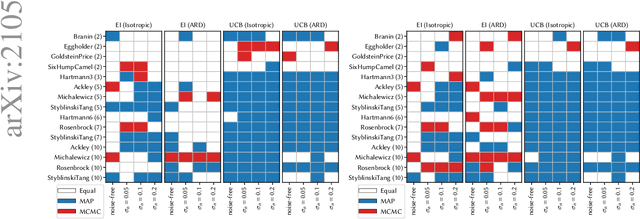



Abstract:Bayesian optimisation (BO) uses probabilistic surrogate models - usually Gaussian processes (GPs) - for the optimisation of expensive black-box functions. At each BO iteration, the GP hyperparameters are fit to previously-evaluated data by maximising the marginal likelihood. However, this fails to account for uncertainty in the hyperparameters themselves, leading to overconfident model predictions. This uncertainty can be accounted for by taking the Bayesian approach of marginalising out the model hyperparameters. We investigate whether a fully-Bayesian treatment of the Gaussian process hyperparameters in BO (FBBO) leads to improved optimisation performance. Since an analytic approach is intractable, we compare FBBO using three approximate inference schemes to the maximum likelihood approach, using the Expected Improvement (EI) and Upper Confidence Bound (UCB) acquisition functions paired with ARD and isotropic Matern kernels, across 15 well-known benchmark problems for 4 observational noise settings. FBBO using EI with an ARD kernel leads to the best performance in the noise-free setting, with much less difference between combinations of BO components when the noise is increased. FBBO leads to over-exploration with UCB, but is not detrimental with EI. Therefore, we recommend that FBBO using EI with an ARD kernel as the default choice for BO.
A Bayesian Methodology for Estimating Uncertainty of Decisions in Safety-Critical Systems
Dec 01, 2010

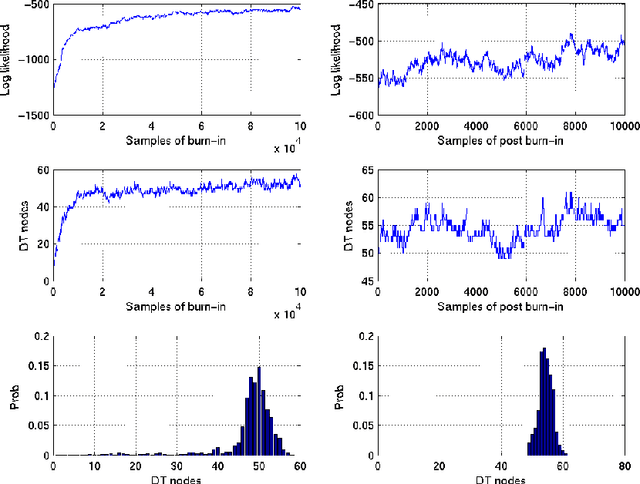
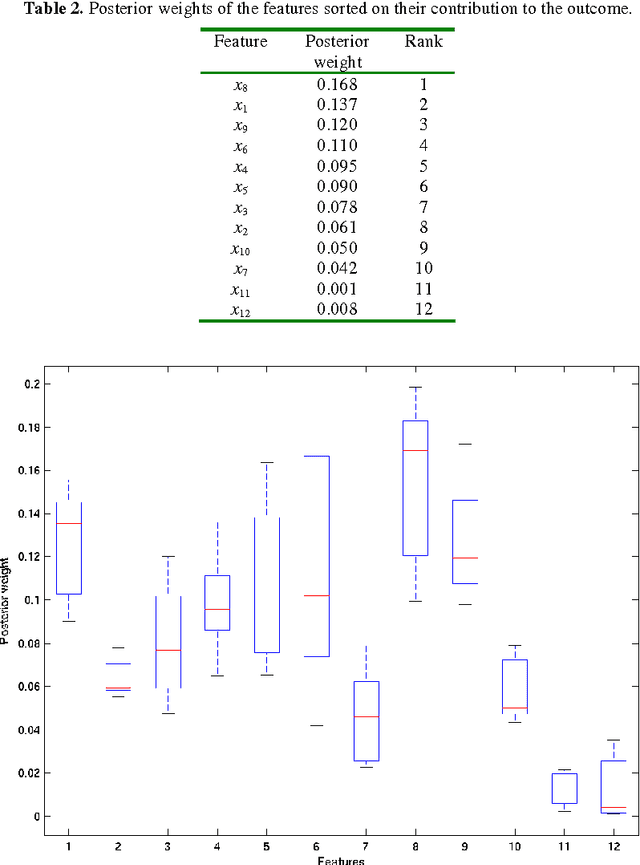
Abstract:Uncertainty of decisions in safety-critical engineering applications can be estimated on the basis of the Bayesian Markov Chain Monte Carlo (MCMC) technique of averaging over decision models. The use of decision tree (DT) models assists experts to interpret causal relations and find factors of the uncertainty. Bayesian averaging also allows experts to estimate the uncertainty accurately when a priori information on the favored structure of DTs is available. Then an expert can select a single DT model, typically the Maximum a Posteriori model, for interpretation purposes. Unfortunately, a priori information on favored structure of DTs is not always available. For this reason, we suggest a new prior on DTs for the Bayesian MCMC technique. We also suggest a new procedure of selecting a single DT and describe an application scenario. In our experiments on the Short-Term Conflict Alert data our technique outperforms the existing Bayesian techniques in predictive accuracy of the selected single DTs.
 Add to Chrome
Add to Chrome Add to Firefox
Add to Firefox Add to Edge
Add to Edge